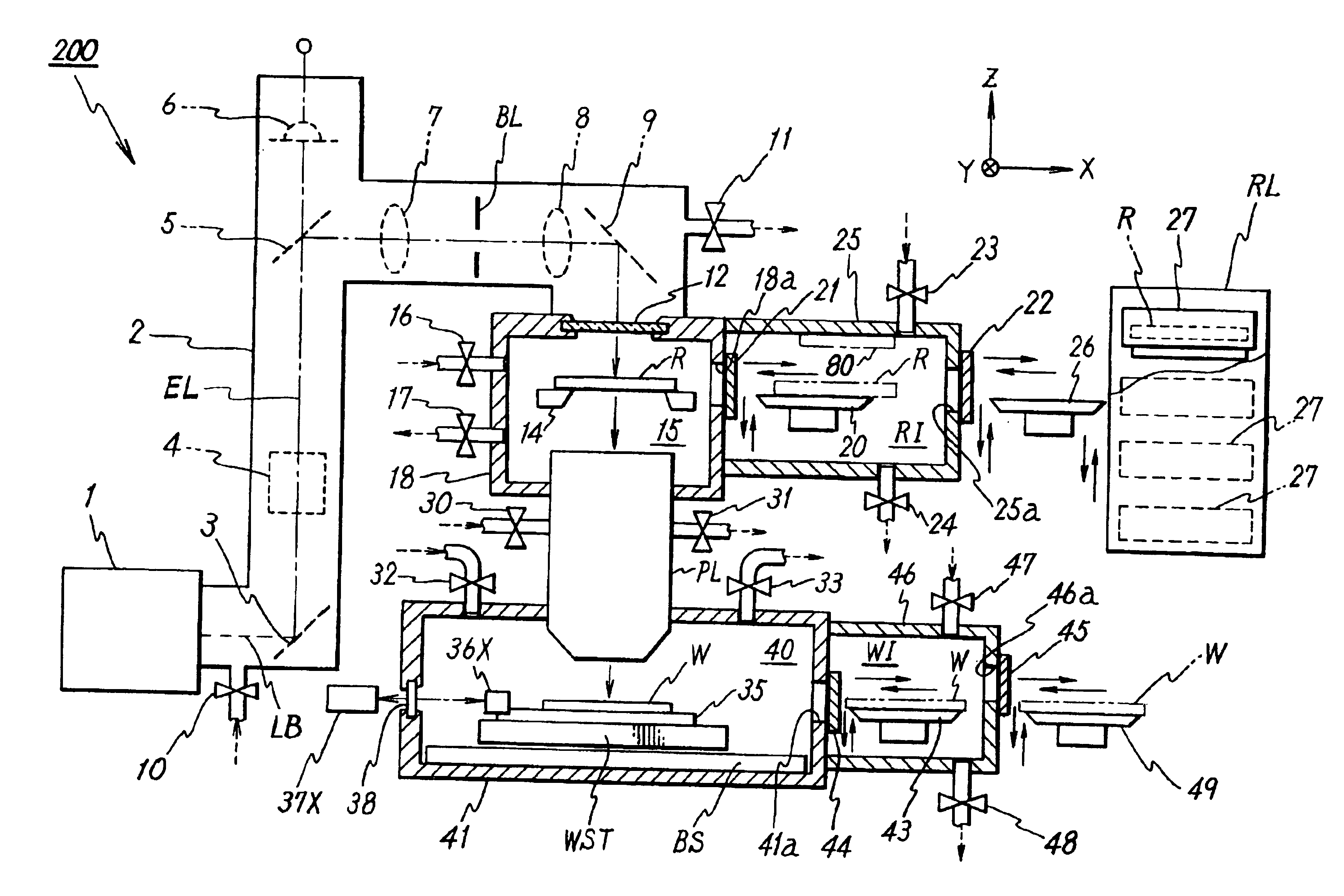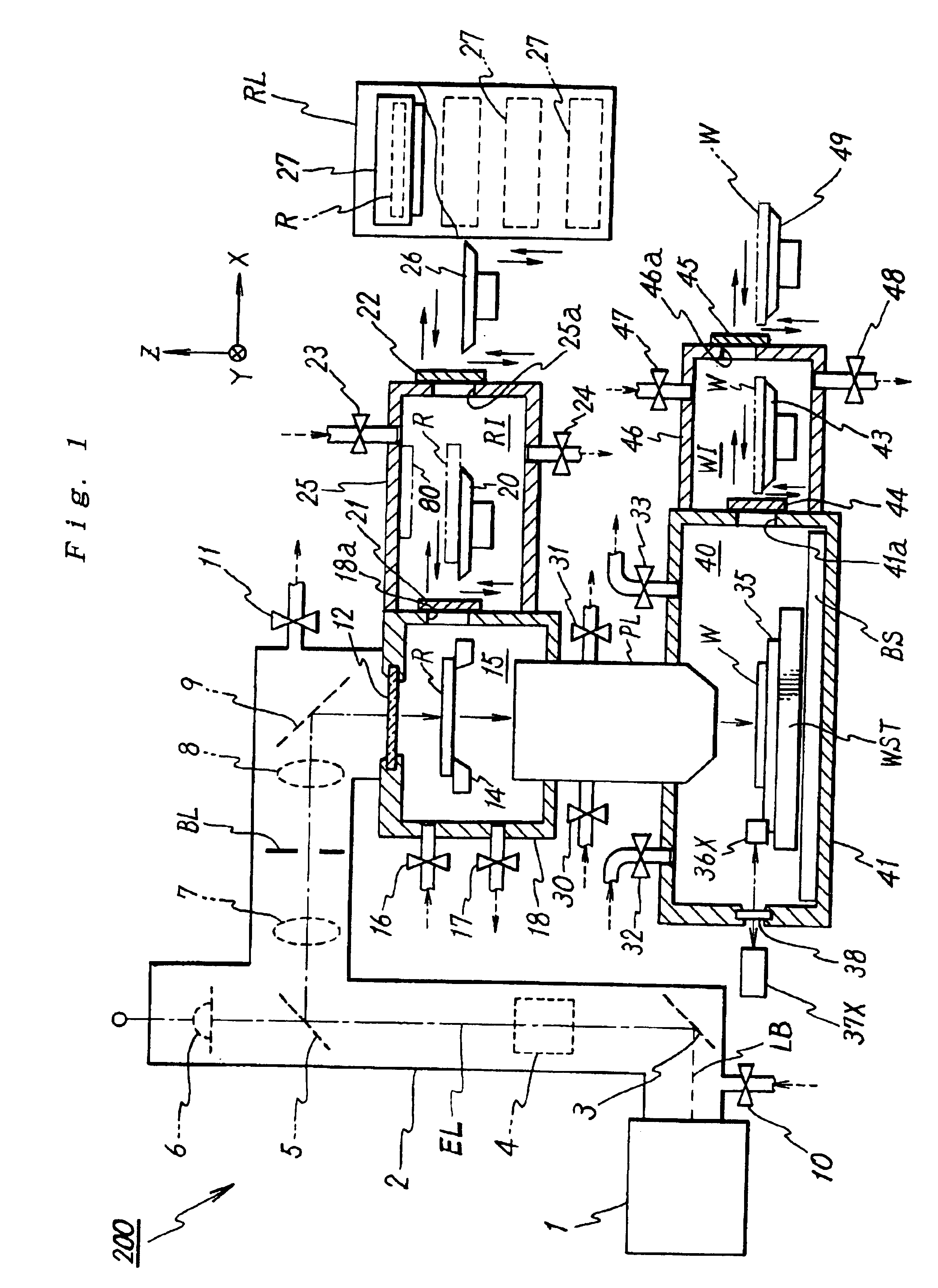Exposure apparatus and exposure method, and device manufacturing method
a technology of exposure apparatus and exposure method, which is applied in the direction of microlithography exposure apparatus, printers, instruments, etc., can solve the problems of small quantity of pollutants that are very likely to stick to the surface of optical elements, the exposure light energy on the wafer (a substrate subject to exposure) becomes unstable, and the transmission in the optical system decreases, so as to achieve stable exposure intensity and accurately formed
- Summary
- Abstract
- Description
- Claims
- Application Information
AI Technical Summary
Benefits of technology
Problems solved by technology
Method used
Image
Examples
first embodiment
[0065]FIG. 1 is a schematic view showing a partial section through an exposure apparatus ;
[0066]FIG. 2 is a block diagram showing main components of the control system of the apparatus in FIG. 1;
[0067]FIG. 3 is a schematic view showing the gas piping system of the apparatus in FIG. 1;
[0068]FIG. 4A is a plan view of reticle R with the pattern surface facing up, and FIG. 4B is a cross-sectional view taken along line B-B in FIG. 4A;
[0069]FIG. 5 is a view showing a modified example of a wafer stage;
[0070]FIG. 6 is a plan view showing an example of the arrangement in which two wafer-gas-replacement rooms are arranged;
second embodiment
[0071]FIG. 7 is a cross-sectional view through a reticle-gas-replacement room ;
[0072]FIG. 8A is a schematic, oblique view of an exemplary reticle library for which a circulation mechanism of low-absorbent gas is provided, and FIG. 8B is an enlarged, cross-sectional view of the joint portion of the reticle library and a supply mechanism 54 in FIG. 4A;
third embodiment
[0073]FIG. 9 is a cross-sectional view through a reserve room ;
[0074]FIG. 10 is a flow chart for explaining a device manufacturing method according to this invention; and
[0075]FIG. 11 is a flow chart showing a process of step 204 of FIG. 10;
PUM
| Property | Measurement | Unit |
|---|---|---|
| wavelength | aaaaa | aaaaa |
| time | aaaaa | aaaaa |
| spends time | aaaaa | aaaaa |
Abstract
Description
Claims
Application Information
 Login to View More
Login to View More - R&D
- Intellectual Property
- Life Sciences
- Materials
- Tech Scout
- Unparalleled Data Quality
- Higher Quality Content
- 60% Fewer Hallucinations
Browse by: Latest US Patents, China's latest patents, Technical Efficacy Thesaurus, Application Domain, Technology Topic, Popular Technical Reports.
© 2025 PatSnap. All rights reserved.Legal|Privacy policy|Modern Slavery Act Transparency Statement|Sitemap|About US| Contact US: help@patsnap.com



